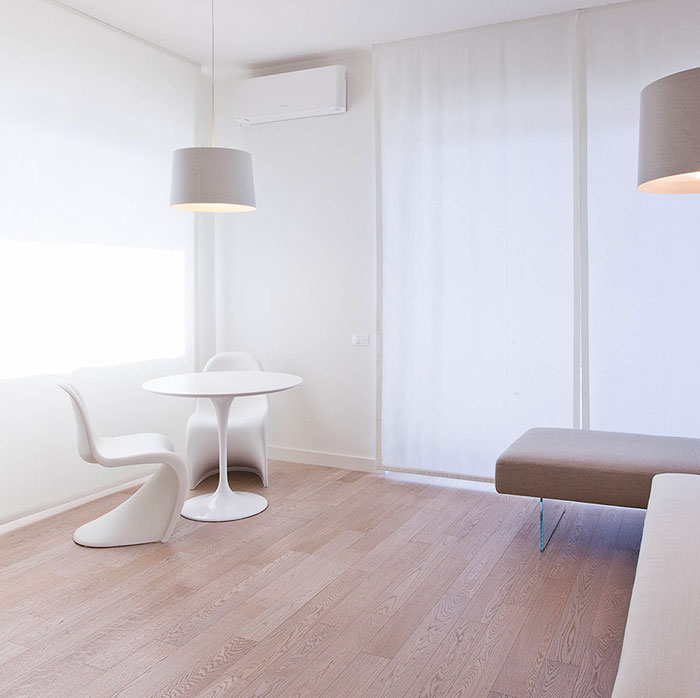How do you protect wooden floor from air conditioning?
Everyone loves wood flooring. It is beautiful, comfortable and irresistible for its naturalness. No more just in the night area and the living room, today wood has become the main character in the kitchen and bathroom … Wooden floor is a living material and, as such, is subjected to different weather conditions. In this article, in particular, we discover together how to protect wood flooring from air conditioning.
Wood naturally reacts to any atmospheric changes in the room
Wood is a living material that naturally reacts to any atmospheric changes. The ideal conditions for wooden floor are between 16 °C and 22 °C (in any case never below 10 °C or above 30 °C) and humidity between 45% and 60% .
These are usually the ideal temperatures in our home environments, but they could vary with air conditioning. In another article we already discussed wood flooring combined with traditional heating system.
Technological research has allowed us to obtain extremely resistant and long-lasting floor. However, the first good habit to safeguard the quality of our wooden floor over time is to maintain the correct climatic conditions in the rooms.
Did you know humidity affects wood flooring?
Over-drying the air or making the rooms too cold may adversely affect wood flooring. It usually happens in public enviroments (rather than in domestic ones), where the floor also suffers a significant exposure to traffic. To prevent the wood from undergoing natural shrinkage phenomenon, it is important to moderate the use of the air conditioner in summer. In fact, if the air is too dry, the wood may respond with micro-cracks on the surface. On the contrary, if the air is too saturated with humidity, the wood may expand.
Thermo-hygrometer: a little foresight to maintain the parquet during the season changes
As with heating at the beginning of winter, we needto pay close attention to the first days of air conditioning.
It is sufficient to equip yourself with a thermo-hygrometer, checking periodically that the humidity of the air stays between 45-60% and the temperature of about 10-30 °C.
In case of environmental values that are too low, it will be advisable to use a humidifier (useful both in summer and in winter), that helps restore the correct comfort values. Finally, keeping the rooms constantly aired is certainly one of the most effective ways to avoid that there are changes in temperature and humidity due to the use of heating or air conditioners.
Did you find this article useful? Leave a comment.





